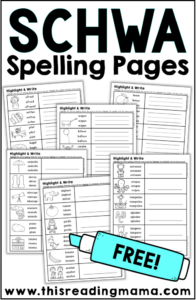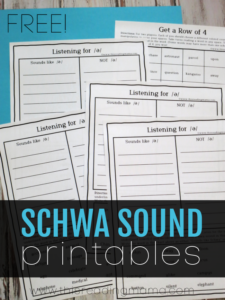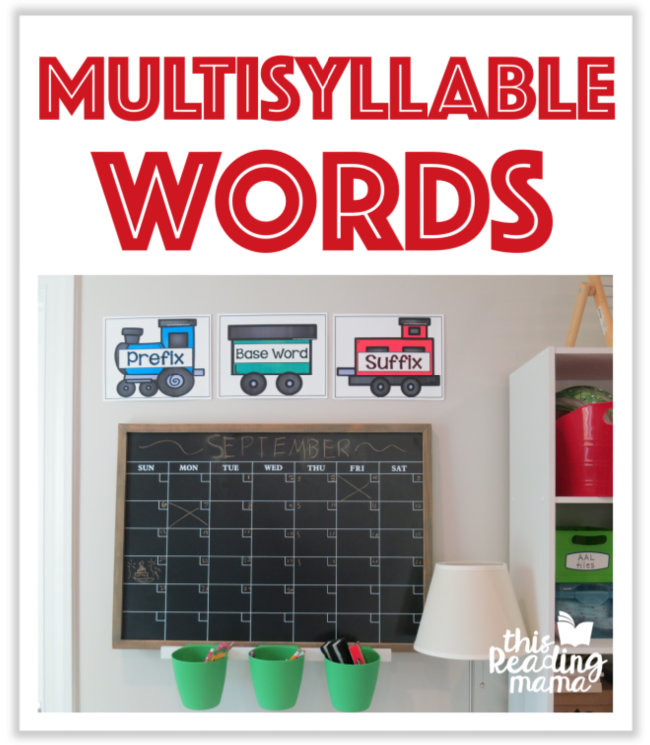Helping our readers identify accented syllables is an important part of helping them successfully read longer words. The concept of accented syllables is a higher level phonemic awareness skill and can be difficult for many of our struggling readers.
I hope that you’ll find some helpful tips for teaching this concept in the post that follows.
Find more teaching tips for struggling readers.

Helping Readers Identify Accented Syllables
1. Start with rhythm.
My first go-to when teaching readers about accented syllables is with nursery rhymes.
Why nursery rhymes? First, because they are familiar.
Secondly, they contain rhythm. This rhythm is vitally important because rhymes and songs typically highlight the accented words and syllables on the accented beats.
For example, say, “Jack and Jill went up the hill.” When it is recited, we naturally accent “Jack,” “Jill, “up,” and “hill” in a kind of rhythm.
The same is true of other poems and songs. Just try singing a few lines of “Jingle Bells” and you’ll notice that the accented syllables and words fall on the accented beats.
2. Contrast accented words with unaccented words in sentences.
When teaching a concept, it is helpful to give non-examples. This is where you can focus on unaccented words in sentences.
Words like a and the are typically not accented in a sentence. We tend to say a like “uh” and the like “thuh.”
This is called schwa, and it is always unaccented. {Schwa is typically marked as an upside-down e.} Ask learners to pay attention to unaccented words in our speech or in rhymes, poems, and songs.
3. Feel your chin drop.
Typically, we drop our jaw/chin lower when we say accented words or syllables. Ask learners to hold their hand under their chin and pay attention to when their chin or jaw drops lower.
If they struggle to do this just with their hand, looking in the mirror so they can actually SEE their jaw drop can be very helpful. This makes finding the accented syllable multi-sensory, meaning that learners are seeing, hearing, and touching their chin as they work on this skill.
4. Sing it. {Yes, I really did say “sing it!”}
Try singing the word. This might seem rather silly, but often it works. We tend to stretch out and/or sing the the accented syllables louder than the unaccented syllables.
5. Recognize common unaccented syllable patterns.
For example, le, el, and ion on the ends of words are pretty much a dead giveaway. They’re going to be unaccented in the word. Words like about, appear, above, and away all follow the same pattern with an unaccented a in the first syllable.
6. Try the accenting the syllables in different ways.
Take a word like table. Try it like TA-ble. Stretch the first syllable out a tiny bit longer and say it a little louder.
Then try it like ta-BLE. Stretch the second syllable out a tiny bit longer and say it louder than the first syllable.
Which one sounds more natural?
7. Find the base word.
Typically the base word is the accented syllable of a two-syllable word. So a word like sweetly would be pronounced SWEET-ly because sweet is the base word.
A word like reread would be pronounced reREAD because read is the base word.
8. Pay attention to homographs.
Homographs are words that look the same but are pronounced differently and often have different meanings.
Think about the word record. It is pronounced reCORD when you say, “I can record my voice.”
It can also be pronounced REcord when you say, “I have no record of your visit.”
9. Use a dictionary.
Older kids can be taught how to use a dictionary to look for the accented syllable(s) in tricky words. Accented syllables might be in all caps, accented with bold letters, or have an accent mark over the top of it.
10. Practice, practice, practice.
Find accented and unaccented syllables is VERY tricky! Some adults even have trouble. That’s why practice is important!
I have some NO PREP Schwa Sound Printables and Schwa Spelling Pages to help your learners with the schwa sound.
Enjoy teaching!
~Becky
Find More Free Printables…




Leave a Reply